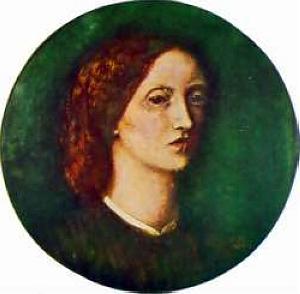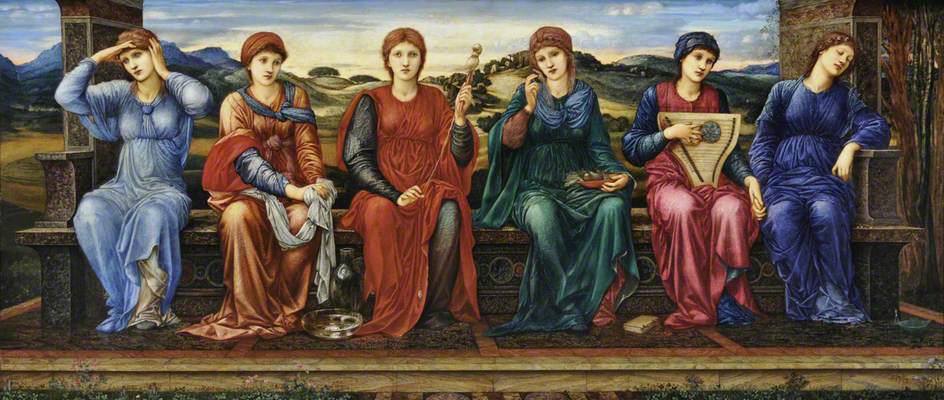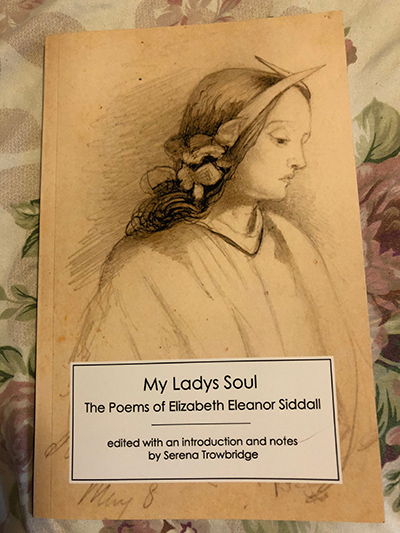In The Shape of My Heart, I shared that I like to blend seemingly unrelated works of art much like one would pair wine with food. Today’s concoction is Sir Edward Burne-Jones’ painting The Hours with a poem by Elizabeth Siddal.
“I have been working very hard in spite of all things, and I hope to finish the ‘Wheel of Fortune’ and the ‘Hours’. I think you never saw the last–not a big picture, about five feet long–a row of six little women that typify the hours of day from waking to sleep. Their little knees look so funny in a row that wit descended on me from above, and I called them the ‘laps of time’. Every little lady besides the proper colour of her own frock wears a lining of colour of the hour before her and a sleeve of the hour coming after–so that Mr. Whistler could, if he liked, call it a fugue.” –Sir Edward Burne-Jones writing to Lady Leighton, quoted from Memorials of Edward Burne-Jones, vol. II
I confess that the symbolism of the colours escaped me until I read the passage above. It’s brilliant with its subtlety.
When I look at The Hours, a stanza from one of Elizabeth Siddal’s poems floats to mind: Slow days have passed that make a year,/Slow hours that make a day,

A Year and a Day
Slow days have passed that make a year,
Slow hours that make a day,
Since I could take my first dear love
And kiss him the old way;
Yet the green leaves touch me on the cheek,
Dear Christ, this month of May.
I lie among the tall green grass
That bends above my head
And covers up my wasted face
And folds me in its bed
Tenderly and lovingly
Like grass above the dead.
Dim phantoms of an unknown ill
Float through my tired brain;
The unformed visions of my life
Pass by in ghostly train;
Some pause to touch me on the cheek,
Some scatter tears like rain.
A shadow falls along the grass
And lingers at my feet;
A new face lies between my hands —
Dear Christ, if I could weep
Tears to shut out the summer leaves
When this new face I greet.
Still it is but the memory
Of something I have seen
In the dreamy summer weather
When the green leaves came between:
The shadow of my dear love’s face —
So far and strange it seems.
The river ever running down
Between its grassy bed,
The voices of a thousand birds
That clang above my head,
Shall bring to me a sadder dream
When this sad dream is dead.
A silence falls upon my heart
And hushes all its pain.
I stretch my hands in the long grass
And fall to sleep again,
There to lie empty of all love
Like beaten corn of grain.
It’s a sad, beautiful poem and its poignancy grows within me every time I read it.
Burne-Jones used a row of beauties to symbolize the passing hours. In contrast, Siddal’s poem describes time ticking away in a painful and slow way, as it usually seems to do when one is mourning.
We all have the same twenty-four hours each day. How we perceive those hours depends largely on our state of mind, heart, and circumstances.
By the way, I am currently immersed in Serena Trowbridge’s new edition of Elizabeth Siddal’s poetry, which offers a riveting and in-depth look at the evolution of her poems from manuscript to publication. I’ll post a review soon. In the meantime, you can snag a copy from Amazon and follow Serena on Twitter.


